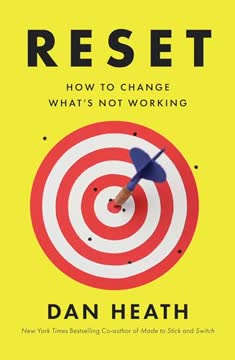Key Takeaways
1. Acknowledge Loneliness and Take Action
Loneliness is subjective. It’s a feeling. And because it’s a feeling, there’s plenty we can do to alleviate it.
Loneliness is an epidemic. Loneliness is a widespread problem, impacting over a billion people globally and carrying serious health risks comparable to smoking. Unlike solitude, which can be peaceful, loneliness stems from feeling invisible or disconnected, regardless of how many people are around you. Dr. Ruth's appointment as New York State's first Ambassador to Loneliness highlights the urgency of this issue.
It's curable. Despite its painful nature, loneliness is not a fatal disease; it's a condition that can be actively beaten back. Dr. Ruth, having experienced profound loneliness throughout her life—from losing her family in the Holocaust to feeling isolated due to her height—knows firsthand that it's possible to overcome. Her background as a sex therapist, tackling the stigma around sexual dysfunction, prepared her to address the shame often associated with loneliness.
Agency is key. This book offers a practical roadmap with concrete ideas to combat loneliness, focusing on behavioral change rather than dwelling on root causes or societal issues. The core message is empowerment: you have the power to pursue relationships that make you feel special and appreciated. It requires effort and "chutzpah," but by taking direct action, you can choose a fuller, richer path right now.
2. Build Connection by Starting with Yourself
If you are struggling with loneliness and are ready to make positive changes in how you interact with others, you must first determine what it is about your outlook or behavior that has made you retreat into yourself or push people away.
Self-awareness is foundational. The most crucial step in overcoming loneliness is focusing on yourself. This involves honestly examining your thoughts, feelings, and actions that might be hindering connections. Self-awareness builds confidence, improves communication, and is essential for nurturing healthy relationships. It's often the hardest part, but success here is solely within your power.
Self-acceptance and care. You cannot sustain healthy relationships if you don't love yourself first. This doesn't mean ignoring challenges like disabilities, but gradually accepting what makes you unique and building from there. Investing in your physical and mental well-being—getting enough sleep, eating well, exercising, and even indulging in self-care like massages or masturbation (in moderation)—provides the energy and interest needed to engage with others.
Evaluate and adjust. Take a hard look at your routine and appearance. Are your choices contributing to isolation (e.g., always watching TV)? Gradually replace solitary activities with opportunities for social connection. Ensure your appearance makes you feel approachable and confident; sometimes, acting cheery or wearing bright colors can influence your mood and how others perceive you. Remember, it's okay to be "selfish" and prioritize your needs if being overly generous is making you miserable.
3. Embrace Proactivity and Resilience
When life gives you lemons, make lemonade.
Take initiative. Waiting passively for connections to happen is a recipe for continued loneliness. You must be proactive. This means:
- Admitting your loneliness out loud (even to a mirror)
- Organizing concrete plans with others
- Being the one to initiate contact or gatherings
- Using "props" like a T-shirt or book to signal interests and invite conversation
Develop thick skin. Rejection is an unavoidable part of life. Fear of it holds many people back, but you must push through. Learn to "channel your inner shark" and let minor inconsiderations or criticisms slide. While direct communication is needed for recurring issues, not every slight requires a reaction. The companions you gain will outweigh the rejections.
Turn challenges into opportunities. Difficult situations can be catalysts for connection. Dr. Ruth met her beloved third husband, Fred, by abruptly changing ski partners when the T-bar system was awkward with her tall friend. This "Westheimer Maneuver"—being audacious and taking advantage of circumstances (without harm)—can lead to unexpected positive outcomes. Scan your surroundings, find solutions, and approach difficulties with optimism.
4. Nurture Family Bonds (Even Imperfect Ones)
To patch relationships with family members, you might need to fake a smile until a real smile emerges.
Family is a unique harbor. Family relationships, when positive, offer a powerful sense of belonging, security, and unconditional love rooted in shared history. However, family can also be a source of pain or feel absent due to distance, estrangement, or loss. How lonely you feel often depends on your perception of these circumstances.
Mindset matters. You can mend many hurts by changing your perspective. Even if circumstances can't change (like estrangement), believing that repair is possible opens the door to future connection. Dr. Ruth's father's smile as he was taken away, and her own smile on the Kindertransport train, illustrate how choosing hope can impact others and yourself. Forgiving, forgetting, and adopting a more optimistic view are crucial steps.
Active engagement and vulnerability. Strengthening family ties requires effort. Go to gatherings, even if some relatives are difficult; avoiding events cuts you off from positive connections and risks future exclusion. Practice being less judgmental and more accepting of family flaws, just as you acknowledge your own. Be a good listener, offering support without always trying to fix problems. Crucially, be vulnerable: communicate your needs, especially when grieving, and consider appointing a "personal ambassador" within the family to share how you're feeling. Don't hide your situation; admit you need help.
5. Cultivate Diverse Friendships & Romantic Connections
Every single person on this great big planet of ours could potentially become a friend or lover.
Broaden your definition. Don't limit your idea of friendship to a single "best friend" or people exactly like you. There are many types of worthwhile connections—casual friends, work friends, friends of friends, cross-generational friends, and even keeping old lovers or exes if the relationship was positive. Dr. Ruth's diverse friendships, including those with her first boyfriend, former assistant, and neighbor, demonstrate the value of varied relationships.
Be intentional and selective. You are the boss of your social life. Curate your circle by spending time with people who genuinely interest you, share your values, and make you feel good. Avoid chronic complainers or those who drain your energy. While not judging a book by its cover is important (Dr. Ruth almost missed writing Sex for Dummies by dismissing the title), be ruthlessly selective about who you invest in, especially avoiding relationships built on superficiality or financial exploitation (like some online gaming).
Effort and authenticity. Meaningful connections require time and effort. Dr. Jeffrey Hall's research shows it takes significant hours to build deep friendships. This time should be spent doing activities together ("paying attention to context") and engaging in open, honest conversation, sharing updates and confidences. While small talk is a gateway, deeper discussions strengthen bonds. Avoid one-night stands if you're lonely, as they can increase feelings of isolation. For romantic relationships, continue having sex as you age, making adjustments as needed, as intimacy is a powerful glue.
6. Engage Actively in Your Community
Beyond your front door is where all the people are.
Make your town smaller. Combat the anonymity of larger places by actively participating in local communities. Join organizations, neighborhood groups, or volunteer committees. Consistent involvement allows you to encounter the same people repeatedly, building familiarity and trust. Dr. Ruth's decades-long involvement with the YM&YWHA and Fort Tryon Park committee illustrate how sustained commitment fosters deep local connections and a sense of belonging.
Find shared interests. Community activities centered around shared passions or goals are excellent places to meet like-minded people. Whether it's a hobby group, a religious community, a support group (ideally professionally led), or even reading socially at a library or bookstore event, common interests ease the path to conversation and connection. Authenticity is key; choose activities that genuinely pique your interest, and your enthusiasm will help overcome anxiety about meeting strangers.
Offer and accept help. Simple acts of neighborliness are powerful antidotes to loneliness. Offer help to those nearby, like assisting new parents or elderly neighbors. Doing good deeds boosts your self-worth and makes you feel valuable. Equally important is being open to receiving help, even "feigning needs" like borrowing an ingredient, to create opportunities for interaction and connection. These small exchanges build rapport and weave you into the fabric of your local community.
7. Leverage Technology Mindfully
I don’t view technology as the enemy.
Technology as a tool. While excessive technology use can contribute to loneliness by replacing in-person interaction, it can also be a valuable tool for building and enhancing connections. Abstaining completely can leave you out of social loops. The key is using technology with purpose to facilitate real-world relationships.
Enhance in-person interactions. Your phone can be a "stepladder" to break into social groups, like asking to take a photo for the host. However, it can also be a distraction. Practice Sherry Turkle's "seven-minute rule" to stay engaged in conversations before checking your phone. Use your phone to take notes after interactions to remember details about friends' interests for thoughtful gestures.
Bridge distance and facilitate connection. Technology is excellent for maintaining connections across distance. Talk more and text less to benefit from voice intonation and emotional cues. Use emojis in texts when calls aren't possible to convey tone. Explore apps and websites designed for meeting people with specific interests (like Meetup) or for dating (like Jdate), but be honest in your profiles and selective about who you invest time in. Remember, even remote work connections can be strengthened through intentional efforts like Adam Grant's "Five-Minute Favor" or Reciprocity Rings.
8. Seize Calendar Opportunities for Connection
Holidays provide timely opportunities for connecting with others.
Holidays as connection points. The calendar offers built-in opportunities to connect. Obvious holidays like Thanksgiving or the Fourth of July are perfect for gathering with family, friends, or neighbors (even inviting military families to your barbecue). Joining holiday planning committees can build consistent community ties.
Plan for difficult days. Holidays like Mother's Day or Father's Day can intensify loneliness if you've lost a parent or are estranged. Plan ahead for these days:
- Acknowledge your feelings; don't pretend you're okay.
- Connect with friends or other family members.
- Engage your senses by experiencing things that remind you of your loved one (like eating their favorite food).
- Consider becoming a surrogate grandparent or participating in formal programs that connect generations.
Embrace smaller celebrations. Don't wait for major holidays. Celebrate silly days like World Compliment Day (March 1st) to practice small kindnesses and make others feel good. Throw parties for your birthday or other fun, quirky reasons to bring people together. These intentional efforts create opportunities for interaction and deepen bonds throughout the year.
Last updated:
Review Summary
The Joy of Connections receives mostly positive reviews for its practical advice on combating loneliness and building relationships. Readers appreciate Dr. Ruth's wisdom, personal anecdotes, and direct writing style. Many find the tips helpful, though some consider them common knowledge. The book is praised for its accessibility and optimistic tone. Critics note it may be more suited for extroverts and lacks depth in certain areas. Overall, reviewers commend Dr. Ruth's effort to address an important issue, even if not all suggestions resonate with everyone.
Similar Books









Download PDF
Download EPUB
.epub digital book format is ideal for reading ebooks on phones, tablets, and e-readers.




